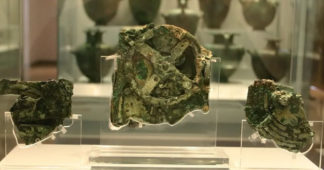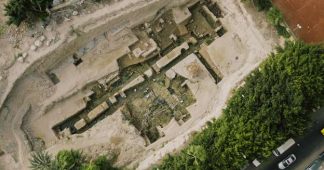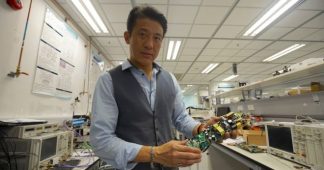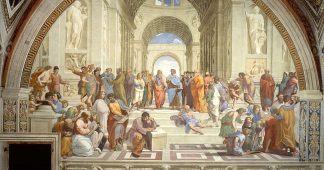The Antikythera Mechanism, widely believed to be the world’s first computer, has had a lasting impact on scientists and thinkers across the world.
By Evaggelos Vallianatos
January 8, 2022

The Tablet, or the Antikythera Mechanism
“Tablet” was probably the name ancient Greeks gave the Antikythera Mechanism, which dates from the second century BC. This was an era of the golden age of science and civilization in the Greek realms of the empire that survived the death of Alexander the Great.
Aristotle tutored Alexander the Great, and was the mind behind the eruption of science and technology in Alexandria, Egypt that was responsible for the creation of the computer.

The Tablet was probably built in Rhodes. It operated with a hand-crank. But despite its simplicity, this was a very small and very sophisticated astronomical computer built with scientific technology, the likes of which only re-emerged in the eighteenth century.
The brain of the computer was made up by several interlocking bronze gears. Most of them were withing the largest fragment, dubbed the Wheel of the Sun.
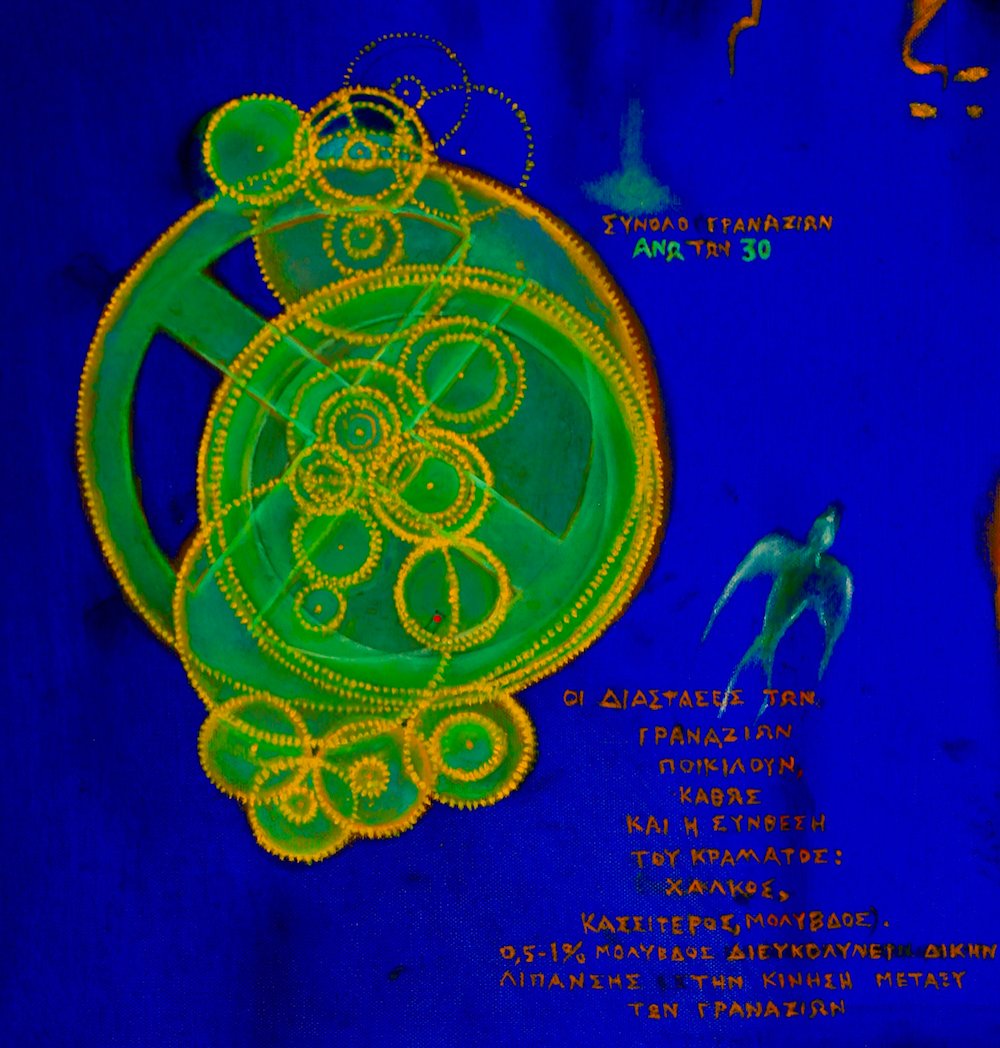
The Tablet was a portable device, a laptop BC computer of genius. It had inscriptions for the benefit of the user.
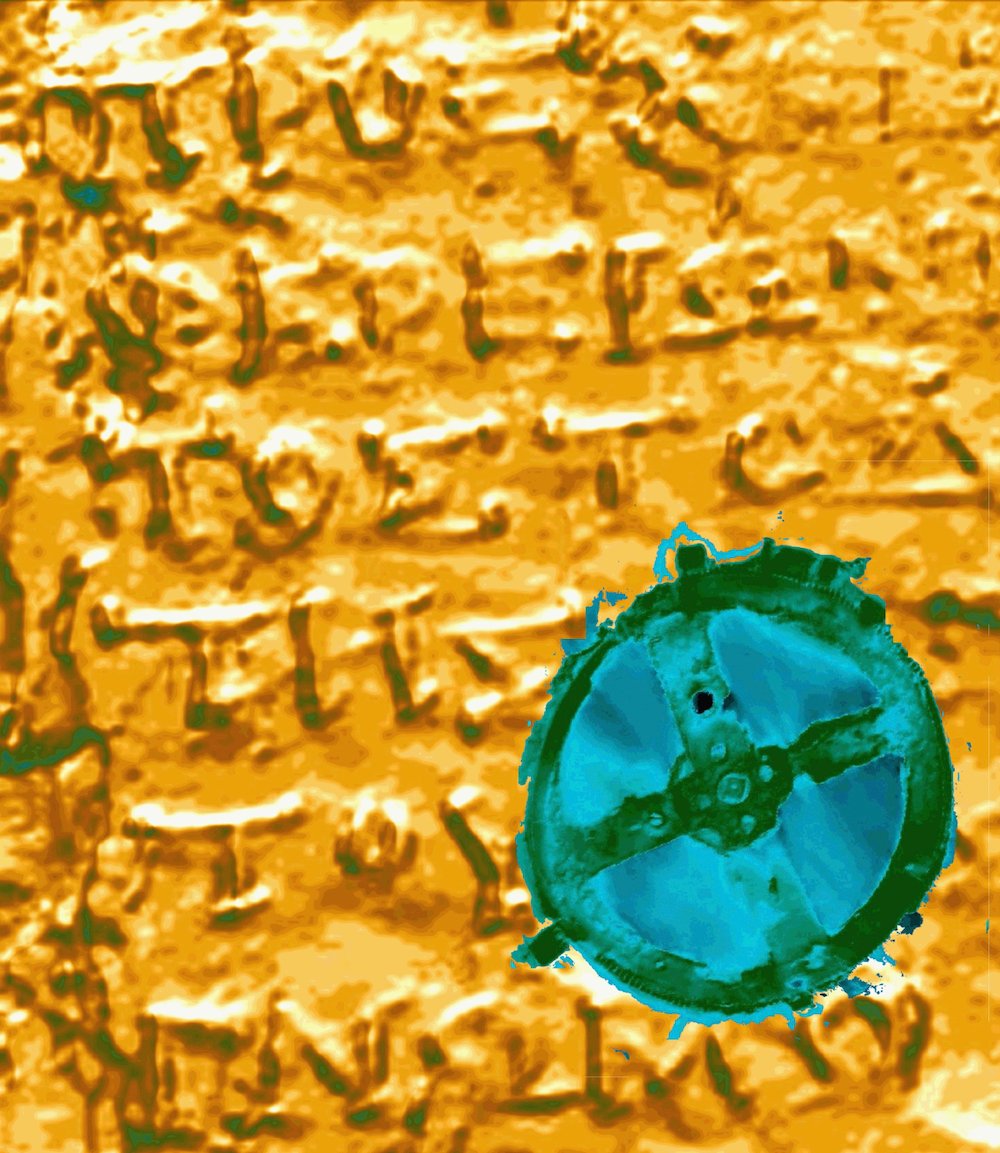
The Antikythera Mechanism was also a very accurate calendar. Furthermore, it was a predictive machine. It predicted the eclipses of the Sun god Helios and the Moon and mapped the movements and positions of the planets, major stars, and constellations.
Predicting the eclipses of the Sun and the Moon was terribly important. These two stars, like all other stars, were gods to the Greeks. Seeing the Sun or the Moon disappear from the sky was more than frightening.
During the Peloponnesian War, the Athenians lost a huge fleet and almost 40,000 men at Syracuse — primarily because of the lunar eclipse of August 27, 413 BC. Seers convinced the Athenian commander-in-chief, General Nikias, to delay departure by “three times nine days” for sacrifices to satiate the Moon.
This delay turned fatal. The enemies of Athens, the Spartans and the Syracusans, attacked and destroyed the Athenian invaders. Thucydides reports that defeat drove the Athenian troops mad, as noted in “The Peloponnesian War,” 7.71.
The designers of the Tablet were well aware of the military implications of solar and lunar eclipses.
In addition, the Antikythera Mechanism had considerable scientific, astronomical, calendrical, religious, and political usefulness. This guaranteed its widespread ownership. There must have been hundreds, if not thousands, of such computers all over the Greek world and more than one place manufacturing them.

Not much ancient reporting on the Tablet
The paradox of finding very little precise information in the historical literature about a fabulous device like the Antikythera Tablet is not difficult to explain.
Ktesibios, who made gears possible in early third century BC, was a great engineering inventor whose written work disappeared. Archimedes, the greatest scientist-engineer of antiquity, perhaps of all time, improved the engineering of the gears of Ktesibios. He wrote an entire book on how to construct a mechanical universe, and the book never made it to our times.
A brief mention of an elementary astronomical device resembling the Tablet found a niche in The Alexander Romance, a popular novel about Alexander and his heroic adventures. The author is an unknown Greek writer who lived sometime between the second and fourth centuries. His novel eventually became a world best seller. It survived in 80 versions in 24 languages.
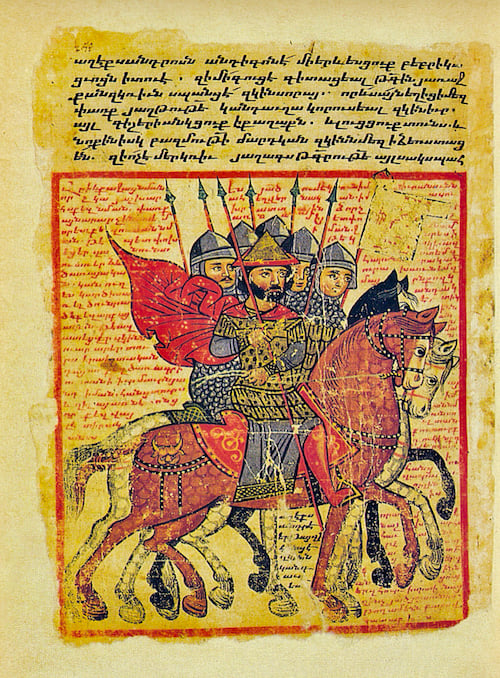
In some of his works, the Roman intellectual and politician Cicero, described the planetariums of Archimedes and Poseidonios, in The Republic 1.14.21-22; Tusculan Disputations 1.63; and The Nature of the Gods 2.87-89. This is the closest literary evidence we have of the possible prototype for or, in the case of the sphere of Poseidonios, a working model of, the Antikythera computer. Poseidonios lived in Rhodes in the first century BC.
Second, in the Introduction to the Phenomena, Geminos, student of Poseidonios, describes the science of the calendars of his time. Geminos knew that in a Metonic calendar of 235 months things get complicated.
First of all, the calendar was named after the fifth century BC Athenian astronomer Meton. The Metonic 19-year period has 6940 days (from counting 12 years of 12 months and 7 years of 13 months). Some months had 29 days and some others had 30 days.
The 29-day month Metonic cycle equaled 6815 days (29 x 235=6815) and the 30-day cycle was 7050 days (30 x235=7050). Geminos harmonized the lunar days and months with the solar year by subtracting a day every 63 days in the 19-year Metonic calendar of 235 months. Sixty-three comes from dividing 6940 days by 110 days; the number 110 is the difference between 6940 and 7050.
The astonishing thing about these calculations by Geminos is that we find the same math inscribed in the back cover of the Antikythera computer. That’s not accidental.
Geminos was an astronomer, a mathematician, and a philosopher who wrote for non-experts. He taught astronomy and he probably designed and constructed astronomical calendars and instruments like the Antikythera computer. That’s why his “Introduction to the Phenomena” captured the Greek science built into the Antikythera Tablet.
The calendar Geminos talked about happened to be the calendar on the Metonic spiral of the Antikythera computer.
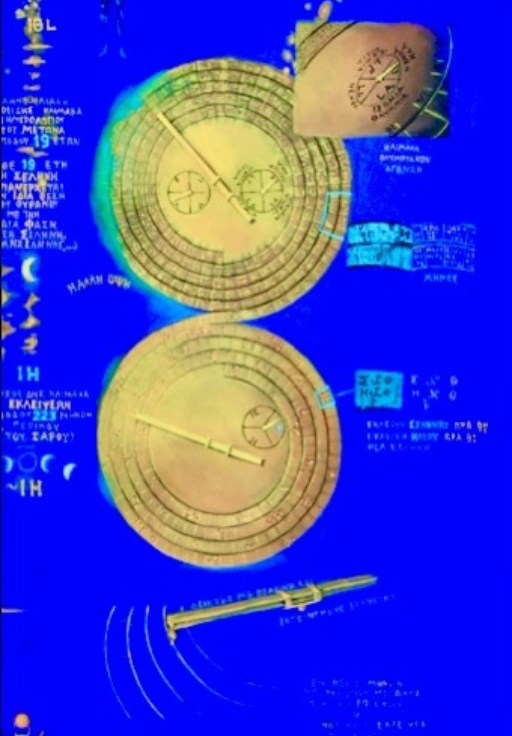
The Metonic calendar of the Tablet fits the calendar Corinth used in its colonies in northwest Greece, especially Dodona and Ambrakia in Epirus.
This was also true for the calendar of Tauromenion (now Taormina) in Sicily. Geminos also writes about the celestial spheres / planetariums he employed in his research: one was a solid sphere (sphaira steraia, XVI.12) and the other was a ringed sphere (sphaira krikote, XVI.10, 12). Most likely, these spheres were models of the circulating Tablet.
Third, Heron of Alexandria is probably a key witness to the survival of the technology of the Antikythera computer. He worked in the first century. He likely left a detailed description of the celestial computer and how to build it, but the text did not survive. Yet in his Pneumatics he describes the construction of mechanical devices in geometrical terms, in a sense, informing us how to use simple machines to build more complex machines.
Heron built and used Antikythera-like devices. In Pneumatics, he says he wrote extensively on water-powered Sundials he calls Oroskopia, which might have been geared clocks. However, only two fragments on Oroskopia survived. Nevertheless, I am convinced Heron’s knowledge of mathematics, physics, astronomy, and engineering was profound and modern. His Aiolosphere, a first-ever steam engine, and robots are of extraordinary ingenuity and mechanical sophistication.

Fourth, the astronomer Ptolemy, who flourished after Heron in the second century, described in his global best seller Almagest his construction of a Meteoroskopeion, one of the names Greeks used for celestial devices or astronomical computers. Such an instrument for the observation of the heavens would be the equivalent to an Antikythera-like mechanism.
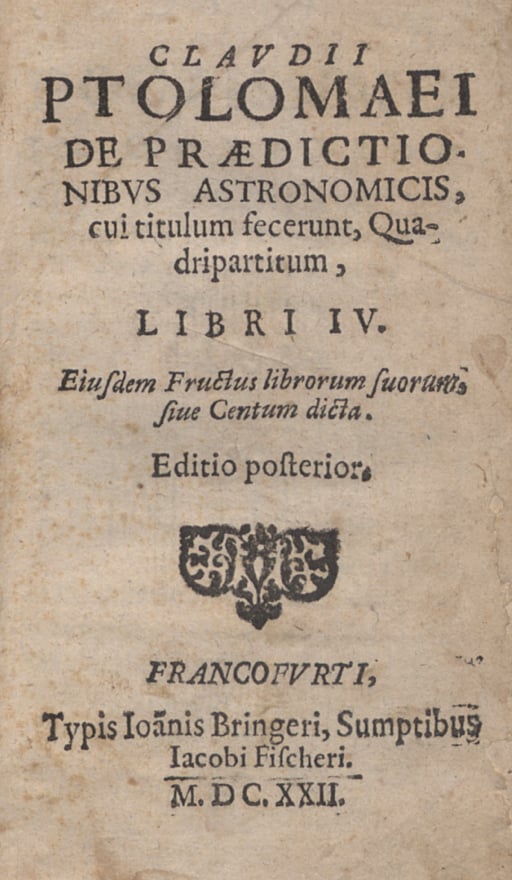
Perhaps it was an advanced version of an armillary sphere for his astronomical studies. Ptolemy also spoke eloquently and with knowledge about the science of prediction, especially human, natural, and astronomical phenomena. This included the movements and positions of the Sun-Helios, the Moon, and the planets (Tetrabiblos (1.3.4-3.20; 2.7.1-7.4; 2.10.1-10.4; 3.1.1-1.3).
And like Geminos, he routinely predicted the eclipses of the Sun and the Moon.
Fifth, the great physician Galen of the second century was well aware of Greek astronomical achievements. He admired the beauty and order of the Sun (Helios), the Moon, and the “whole chorus of stars,” their size, and ceaseless motion. In his book On the Usefulness of the Parts of the Body he spoke of mechanical models built in imitation of the “revolutions of the wandering stars (the planets).”
Sixth, the Greco-Roman poet Claudian, who lived in the fourth century, praised Archimedes’ glass sphere in enclosing a man-made Cosmos — challenging Zeus and his control of the universe.
Seventh, the fifth-century Platonist and historian of science, Proklos, wrote in his book A Commentary on the First Book of Euclid’s Elements about “the art of making spheres imitating the revolutions of the heavens.” Clearly, those spheres were mechanical universes that, like the Antikythera Tablet, brought the heavens down to Earth.
Eighth, another witness of the continuing influence of Antikythera Mechanism-like devices was Flavius Magnus Aurelius Cassiodorus Senator, who lived from 485 – 585. Cassiodorus was a politician, writer, and a monk. He was the publicist of the Ostrogoth king Theodoric of Italy for several years. He was educated in Greek culture and had a grasp of the scientific and technological achievements of the Greeks.
He corresponded with another outstanding scholar also versed in Greek culture and science, Anicius Manlius Severinus Boethius, c. 480 – c. 525. In a letter to Boethius, Cassiodorus asks for a sundial and a water clock. He marveled at the machines and automata from the legacy of Heron of Alexandria. He described a “tiny device” with great astonishment and enthusiasm. He is so taken by the beauty, complexity, and purpose of what he calls Archimedes Sphere, he becomes poetic in his understanding of what the device was and what it represened. He says:
“This tiny device (is) pregnant with the world, (being) a portable sky, a compendium of the universe, a mirror of nature which reflects the heavens.”
This is a marvelous metaphor for the Antikythera Mechanism, capturing its scientific and philosophical design and purpose.
Finally, I read more than Geminos’ Introduction to the Phenomena. My immersion in the surviving books and literary fragments of Greek philosophers and scientists made me a participant in the evolution of science and technology that assured the building of a mechanism of advanced technology like the Antikythera computer.
It is possible, of course, we have not searched hard enough for more versions or copies of this ancient device. After all, the Antikythera machine did not vanish.
Medieval Greek Sundial
In 1983, a Lebanese sold to the Science Museum of London a sundial constructed in Constantinople, in all probability, around the early sixth century. One of the wheels of this Sundial had 59 teeth. This wheel measured the movement of the Moon. Like ancient lunar calendars, this Sundial represented a 30-day month followed by a 29-day month, the gearwheel turning a tooth a day.
This Greek sundial is the oldest, if extremely simplified, version of the Antikythera computer.
To find anything resembling this technology, one has to wait until the eleventh century when Abu Rayhan al-Biruni, 973-1050, an Arab natural philosopher, described a geared calendar.
Michael Wright, a British engineer with a talent for building machines, made a working model of this Medieval Greek sundial. He saw the gearing of the old clocks – gearing that used to model the movements of the Sun, Moon, and the planets – into the big engines of the Industrial Revolution.
In the case of the Greek sundial, its technology of gearwheels was pretty similar to the description of al-Biruni. This meant that the Greek knowledge of gears passed on to the Arabs, making their own clockwork calendars.
In addition, the construction of the Greek sundial in Constantinople showed that the instrument, clearly descended from the Antikythera model of Greek computers, was not a luxury toy but an everyday calendar. There could have been thousands of these sundial calendars all over the Greek medieval world.
The Arabs copied the Greek geared machine and, eventually, they passed it on to the Europeans in thirteenth-century Muslim Spain.
The Antikythera Mechanism and Greek technology in the West
To this basic Greek technical hardware that reached Europe through Muslim Spain, a much larger scientific and technological influence on Europe came from the Greek East.
Greek scholars in the mid-fifteenth century abandoned their conquered country and moved to Florence, Padua, and other cities in the West. They brought with them the literary treasures of their ancestors. This included tremendous amounts of theoretical and engineering knowledge, which sparked the Renaissance and, in time, Europe’s sophisticated clockwork technologies that underpinned the Scientific and Technological Revolutions of the sixteenth and seventeenth centuries.
Evaggelos Vallianatos, Ph.D., is a historian and environmental theorist. He is the author of hundreds of articles and seven books, including “The Antikythera Mechanism: The Story Behind the Genius of the Greek Computer and its Demise” (Universal Publishers, 2021).

We remind our readers that publication of articles on our site does not mean that we agree with what is written. Our policy is to publish anything which we consider of interest, so as to assist our readers in forming their opinions. Sometimes we even publish articles with which we totally disagree, since we believe it is important for our readers to be informed on as wide a spectrum of views as possible.
